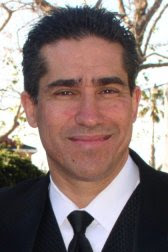 Over on Biologos, Francis Beckwith has posted a third and a fourth instalment of his “Intelligent Design and Me” series. He has dedicated these instalments to some of his critics, naming some UD people specifically, and also discussing the views of Jay Richards of the Discovery Institute.
Over on Biologos, Francis Beckwith has posted a third and a fourth instalment of his “Intelligent Design and Me” series. He has dedicated these instalments to some of his critics, naming some UD people specifically, and also discussing the views of Jay Richards of the Discovery Institute.
I’m grateful that Dr. Beckwith has seen fit to reply. I must confess that I had almost written him off as a “drive-by shooter”, but now I must say “better late than never”, and thank him for his effort to get back to us.
First, as one of the UD people mentioned by Dr. Beckwith, I should apologize for misreporting, in my earlier column, some of the chronological details of Dr. Beckwith’s religious and intellectual life. Dr. Beckwith has corrected me on these in his new article. I can assure him that there was no conscious attempt to misrepresent anything, and I am glad he has reminded us that his adoption of Thomism preceded his return to Rome by many years. This makes the important point that Thomism is a theological approach rather than a religious confession, and is open to Christians other than Roman Catholics.
I won’t comment on Dr. Beckwith’s new articles point by point, but will focus only on two main ideas which I think need discussion.
A. Dr. Beckwith tells us that Thomas Aquinas did not have an argument from design in the style of William Paley, but an argument from the existence of final causes. Read More ›

 Over on Biologos, Francis Beckwith has posted a
Over on Biologos, Francis Beckwith has posted a